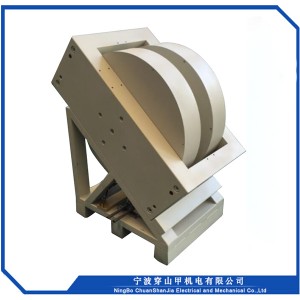MPI Magnet
Magnetic particle imaging (MPI) is a new imaging modality with the potential for high-resolution imaging while retaining the noninvasive nature of other current modalities such as magnetic resonance imaging (MRI) and positron emission tomography (PET). It is able to track location and quantities of special superparamagnetic iron oxide nanoparticles without tracing any background signal.
MPI utilizes the unique, intrinsic aspects of the nanoparticles: how they react in the presence of the magnetic field, and the subsequent turning off of the field. The current group of nanoparticles that are used in MPI are usually commercially available for MRI. Special MPI tracers are in development by many groups that utilize an iron-oxide core encompassed by various coatings. These tracers would solve the current obstacles by altering the size and material of the nanoparticles to what is required by MPI.
Magnetic Particle Imaging uses a unique geometry of magnetics to create a field free region (FFR). That sensitive point controls the direction of a nanoparticle. This is very different from MRI physics where an image is created from a uniform field.
1. Tumor growth/metastasis
2. Stem cell tracing
3. Long-term cell tracing
4. Cerebrovascular imaging
5. Vascular perfusion research
6. Magnetic hyperthermia, drug delivery
7. Multi-label imaging
1、Gradient magnetic field strength: 8T/m
2、Magnet opening: 110mm
3、Scanning coil: X, Y, Z
4、Magnet weight: <350Kg
5、Provide personalized customization






